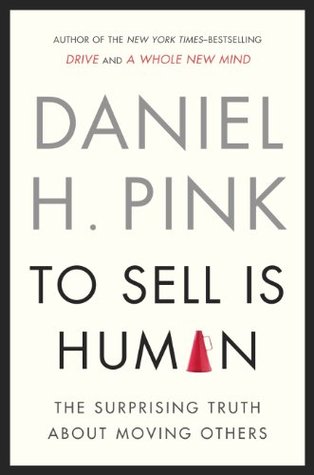More on this book
Community
Kindle Notes & Highlights
Read between
December 12, 2024 - April 10, 2025
“Adding an inexpensive item to a product offering can lead to a decline in consumers’ willingness to pay,” the researchers concluded.
Some things are material purchases—“made with the primary intention of acquiring . . . a tangible object that is kept in one’s possession.” Others are experiential purchases—“made with the primary intention of acquiring . . . an event or a series of events that one lives
As a result, framing a sale in experiential terms is more likely to lead to satisfied customers and repeat business.
Merely assigning that positive label—helping the students frame themselves in comparison with others—elevated their behavior.
The researchers dubbed this phenomenon the “blemishing effect”—where “adding a minor negative detail in an otherwise positive description of a target can give that description a more positive impact.”
the people processing the information must be in what the researchers call a “low effort” state. That is, instead of focusing resolutely on the decision, they’re proceeding with a little less effort—perhaps because they’re busy or distracted. Second, the negative information must follow the positive
So if you’re making your case to someone who’s not intently weighing every single word, list all the positives—but do add a mild negative. Being honest about the existence of a small blemish can enhance your offering’s true beauty.
For more, see her “Content Curation Primer”: http://www.bethkanter.org/content-curation-101/.
And those questions can help both of you clarify where you are and where you should be going. Find more information on this at: http://www.rightquestion.org.
The most valuable sessions were those in which the catcher “becomes so fully engaged by a pitcher that the process resembles a mutual collaboration,” the researchers found.
The purpose of a pitch isn’t necessarily to move others immediately to adopt your idea. The purpose is to offer something so compelling that it begins a conversation, brings the other person in as a participant, and eventually arrives at an outcome that appeals to both of you.
The companies’ aim, and the aim of this type of pitch, is “to define the one characteristic they most want associated with their brand around the world, and then own it. That is one-word equity.”7 When anybody thinks of you, they utter that word.
questions can outperform statements in persuading others.
However, questions weren’t always best. The researchers also found that when the underlying arguments were weak, presenting them in the interrogative form had a negative effect.
By making people work just a little harder, question pitches prompt people to come up with their own reasons for agreeing (or not). And when people summon their own reasons for believing something, they endorse the belief more strongly
Pitches that rhyme are more sublime.
The researchers discovered that participants based their decisions on two factors: utility and curiosity. People were quite likely to “read emails that directly affected their work.”
But they were also likely “to open messages when they had moderate levels of uncertainty about the contents,
Utility worked better when recipients had lots of e-mail, but “curiosity [drove] attention to email under conditions of low demand.”
Meet the Twitter pitch, which uses Twitter as a platform and its character count as a limit on loquaciousness.
Once upon a time ______________________________. Every day, _______________. One day _________________________. Because of that, ___________________. Because of that, _______________________. Until finally ___________________.
(You can also find extra copies of this practice sheet at http://www.danpink.com/pitch.)
Pro tip: Write a fifty-word pitch. Reduce it to twenty-five words. Then to six words. One of those remaining half-dozen is almost certainly your one-word pitch.
Read all twenty-two of former Pixar story artist Emma Coats’s story rules: http://bit.ly/jlVWrG
making sure you can answer these three questions: After someone hears your pitch . . . What do you want them to know? What do you want them to feel? What do you want them to do?
keep a pitch notebook.
try recording your practice pitches.
Go first if you’re the incumbent, last if you’re the challenger.
Recruit ten people—a combination of coworkers and friends and family. Then ask them which three words come to mind in response to one of these questions: What is my company about? What is my product or service about? What am I about?
follow three essential rules of improvisational theater: (1) Hear offers. (2) Say “Yes and.” (3) Make your partner look good.
Select four or five participants. Then ask them to invent a new product and devise an advertising campaign for it. As players contribute testimonials or demonstrations or slogans, they must begin each sentence with “Yes and,” which forces them to build on the previous idea.
we do better when we move beyond solving a puzzle to serving a person.
It tries to move others by expressing empathy with the person viewing the sign (that’s the personal part) or by triggering empathy in that person so she’ll understand the rationale behind the posted rule (that’s the purposeful part).


